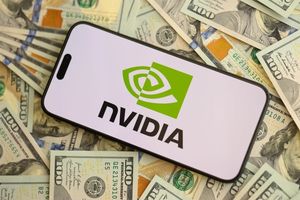
The cryptocurrency and blockchain ecosystem is experiencing an unprecedented era of innovation, fundamentally reshaping its capabilities and future trajectory. As of November 11, 2025, the persistent challenges of blockchain scalability—slow transaction speeds, prohibitive costs, and isolated networks—are rapidly being addressed by a confluence of groundbreaking technological advancements. The past year has seen significant strides in Layer 2 (L2) solutions, the strategic implementation of sharding, the emergence of novel consensus mechanisms, and a robust push towards true cross-chain interoperability. These developments are not merely incremental improvements; they represent a concerted effort to transform blockchain from a niche technology into a cornerstone of the global digital economy.
The immediate market and community response to these innovations has been overwhelmingly positive, marked by a surge in Total Value Locked (TVL) on Layer 2 networks, increased developer activity, and a growing influx of institutional capital into projects spearheading these solutions. This wave of progress is crucial, as it directly tackles the bottlenecks that have hindered mainstream adoption, promising a future where decentralized applications (dApps), DeFi protocols, and Web3 experiences are not only secure and decentralized but also fast, affordable, and seamlessly interconnected. The collective aim is clear: to enhance transaction speed, drastically reduce costs, and elevate the overall efficiency and accessibility of blockchain networks, thereby accelerating their integration into everyday life and enterprise operations.
Market Impact and Price Action
The continuous advancements in blockchain scalability and interoperability have had a profound and generally positive impact on the crypto market, albeit without a single, dramatic price action event. Instead, the influence has been more systemic, driving long-term confidence and attracting sustained investment into the ecosystem. Projects at the forefront of these innovations, particularly those developing robust Layer 2 solutions, sharding mechanisms, and cross-chain bridges, have seen significant capital inflows and increased investor interest throughout 2024 and 2025.
Specific Layer 2 tokens, such as Arbitrum (ARBITRUM: ARB) and Optimism (OPTIMISM: OP), have demonstrated resilience and growth, reflecting the substantial increase in their network usage and TVL. Arbitrum, for instance, has maintained a dominant position, holding over 50% of the total Layer 2 TVL as of mid-2025, a clear indicator of market confidence in its optimistic rollup technology. Similarly, Polygon (POLYGON: MATIC), with its diverse ecosystem encompassing sidechains and zkRollups like Polygon zkEVM, has solidified its position as a scalability powerhouse, with its token benefiting from increased utility and adoption across various dApps and enterprise solutions. The continuous development and deployment of features like Ethereum's Proto-Danksharding (EIP-4844) in 2025 have further bolstered the value proposition of these L2s by making data availability cheaper and more efficient, indirectly supporting their token valuations.
Trading volumes across these scaling solution tokens have seen healthy growth, indicating strong liquidity and active participation from both retail and institutional investors. While direct comparisons to single past events are challenging given the continuous nature of these technological advancements, the current market sentiment mirrors the enthusiasm seen during early DeFi summers, where foundational infrastructure improvements spurred widespread growth. Technical analysis for leading L2 tokens often shows strong support levels forming around key adoption milestones and protocol upgrades, suggesting a market that values fundamental development over speculative hype. The overall trend indicates a maturation of the crypto market, where utility and scalability are increasingly prioritized, leading to sustained demand for assets underpinning these critical solutions.
Community and Ecosystem Response
The crypto community's response to the rapid evolution of blockchain scalability and interoperability has been overwhelmingly enthusiastic and optimistic. Social media platforms like Twitter (now X), Reddit, and various Discord channels are abuzz with discussions about the practical benefits of these advancements: cheaper transactions, faster confirmations, and the promise of a truly seamless Web3 experience. Crypto influencers and thought leaders consistently highlight the critical role of Layer 2s, sharding, and cross-chain protocols in achieving mass adoption, often framing them as the necessary infrastructure for the next wave of decentralized innovation.
The impact on related DeFi protocols, NFT projects, and Web3 applications has been transformative. Many DeFi platforms are increasingly migrating to or building on Layer 2 solutions, leveraging their lower fees and higher throughput to offer more competitive and user-friendly services. This has led to a significant increase in daily unique users interacting with Layer 2 solutions, reportedly a 250% increase from the previous year by Q1 2025, demonstrating tangible user adoption. NFT marketplaces are also benefiting, with reduced minting and trading costs making digital collectibles more accessible to a broader audience. Gaming ecosystems are particularly excited about cross-chain interoperability, envisioning a future where in-game assets can move freely between different blockchain environments, enhancing player experience and asset liquidity.
Broader crypto Twitter and Reddit sentiment reflects a growing confidence that the "scalability trilemma" (the challenge of balancing decentralization, security, and scalability) is being systematically addressed. Discussions frequently praise the modular approach of Ethereum's (ETHEREUM: ETH) roadmap, the innovative consensus mechanisms of high-throughput chains like Solana (SOLANA: SOL), and the unifying potential of interoperability protocols such as Cosmos' (COSMOS: ATOM) IBC and Chainlink's (CHAINLINK: LINK) CCIP. The community sees these developments as essential steps towards a future where blockchain technology can support global-scale applications without compromise, fostering a more inclusive and efficient digital economy.
What's Next for Crypto
The short-term implications of these ongoing advancements in blockchain scalability and interoperability point towards continued growth in user adoption and a diversification of dApp development. We can expect to see further migration of existing protocols to Layer 2 networks and the launch of new, innovative applications that were previously unfeasible due to high gas fees or slow transaction times. The competition among Layer 2 solutions will intensify, driving further innovation in efficiency, security, and developer tooling. As of late 2025, the focus will increasingly shift from if these solutions work to how well they integrate and perform under real-world stress, especially as more enterprise-grade solutions and Real World Assets (RWAs) leverage these platforms.
In the long term, these developments are foundational for the crypto market's maturation and its eventual integration into traditional finance and everyday life. The continuous improvements in transaction speed and cost reduction will make blockchain a viable backend for a myriad of applications, from micropayments and supply chain management to digital identity and tokenized securities. Potential catalysts to watch include the full implementation of Ethereum's sharding roadmap, particularly the PeerDAS (EIP-7594) upgrade scheduled for December 2025, which promises to significantly enhance data availability. Further advancements in ZK-rollup technology, making them even more performant and developer-friendly, will also be a key driver.
Strategic considerations for projects and investors should center on identifying ecosystems that are not only scalable but also truly interoperable and secure. Projects that build with an "omnizain" mindset, leveraging protocols like LayerZero (LAYERZERO: ZRO) or Chainlink's CCIP, will be well-positioned for future growth. Investors should monitor metrics such as TVL on L2s, daily active users, and the volume of cross-chain transactions as indicators of genuine adoption and ecosystem health. Possible scenarios range from a steady, organic growth fueled by technological refinement to a rapid acceleration if a "killer app" emerges that fully capitalizes on these new capabilities. The likelihood of the latter increases with every improvement in underlying infrastructure, making the crypto space an exciting, albeit complex, arena for strategic engagement.
Bottom Line
For crypto investors and enthusiasts, the key takeaway from the latest advancements in blockchain technology and scalability solutions is clear: the foundational infrastructure for mass adoption is rapidly being built and refined. The era of prohibitive gas fees and slow transaction times is drawing to a close, replaced by a landscape of efficient, cost-effective, and increasingly interconnected networks. Solutions like Layer 2 rollups (Optimistic and ZK-Rollups), sharding, innovative consensus mechanisms, and robust cross-chain interoperability protocols are not just theoretical concepts; they are actively deployed and demonstrating tangible benefits, evidenced by the significant growth in user engagement and TVL on these platforms.
The long-term significance of these developments cannot be overstated. By addressing the core limitations of early blockchain iterations, these innovations are paving the way for a decentralized future that is accessible to everyone, not just early adopters. The ability to process thousands of transactions per second at minimal cost, coupled with seamless asset and data transfer between different blockchains, transforms the potential of Web3. This means more fluid DeFi, richer NFT experiences, and enterprise solutions that can finally leverage blockchain's security and transparency at scale.
As we move forward, important dates and metrics to monitor include the progress of Ethereum's sharding implementation, particularly the upcoming PeerDAS upgrade in December 2025, which will be crucial for further data availability enhancements. The continued growth in daily active users on Layer 2 networks, the expansion of interoperability protocols like IBC and CCIP, and the increasing volume of Real World Assets (RWAs) tokenized on these scalable platforms will serve as vital indicators of sustained progress and broader crypto adoption. The future of a truly interconnected, efficient, and user-friendly decentralized digital economy is not just a dream; it is becoming a tangible reality, block by block.
This article is for informational purposes only and does not constitute financial or investment advice. Cryptocurrency investments carry significant risk.





